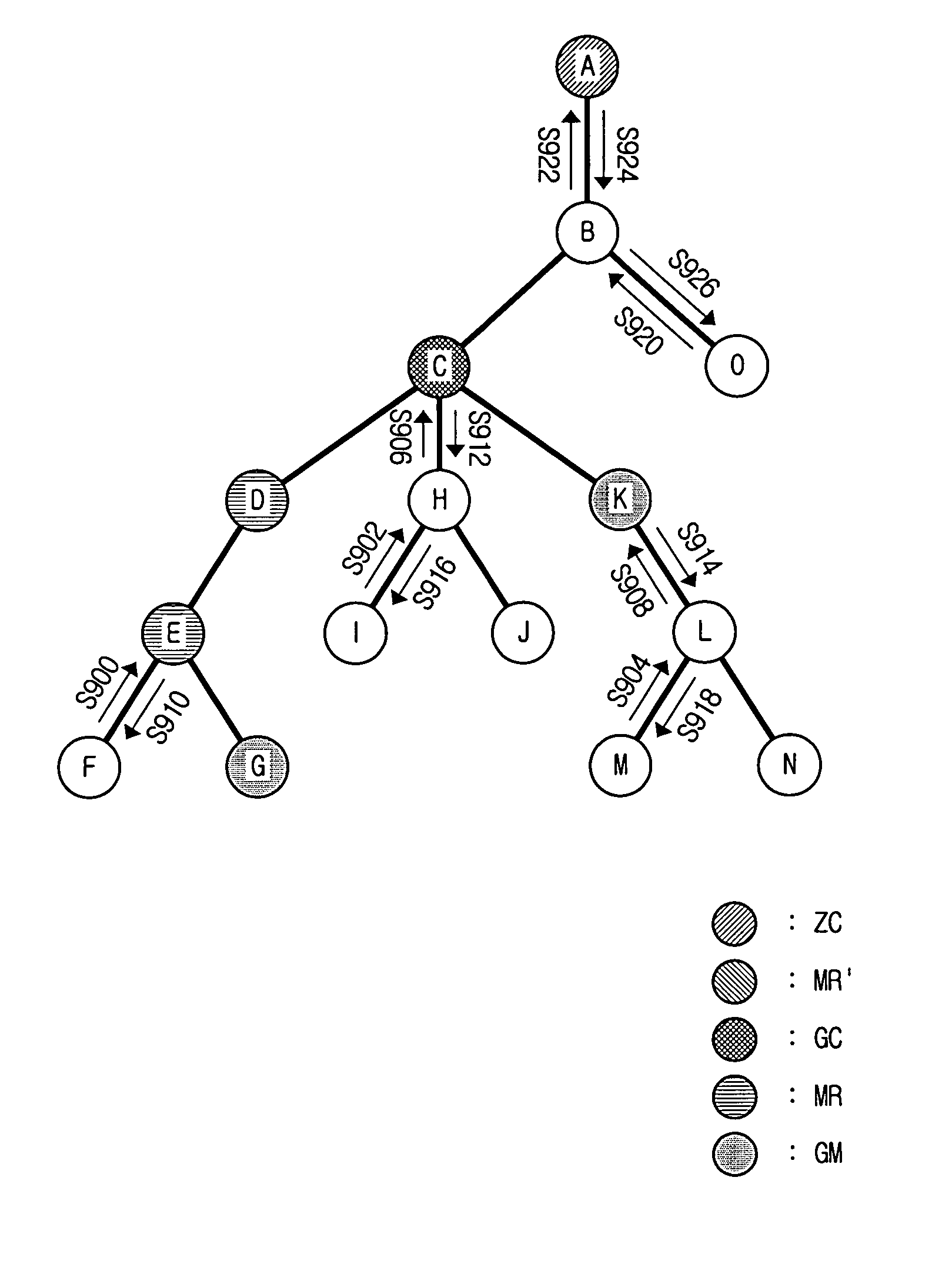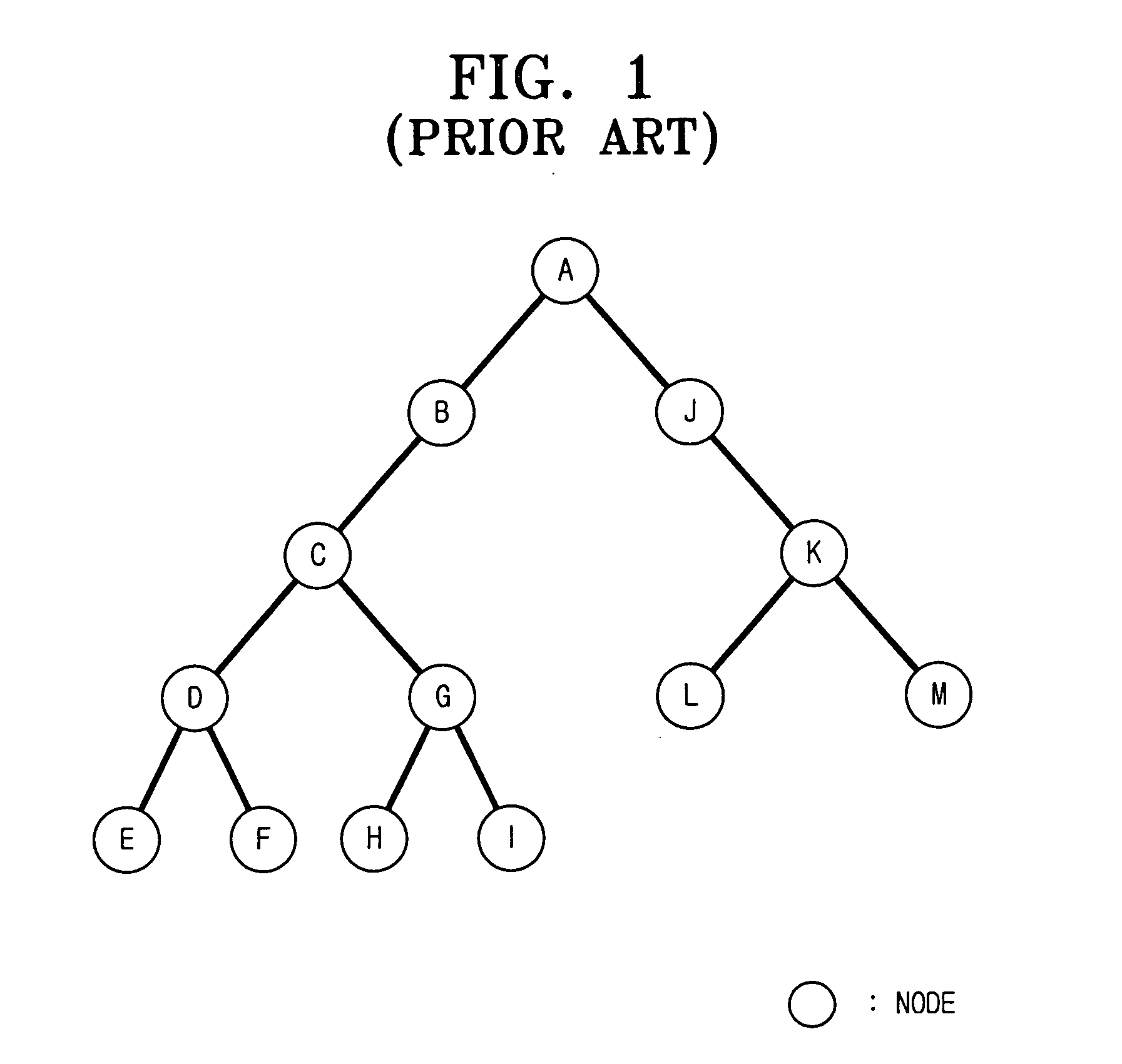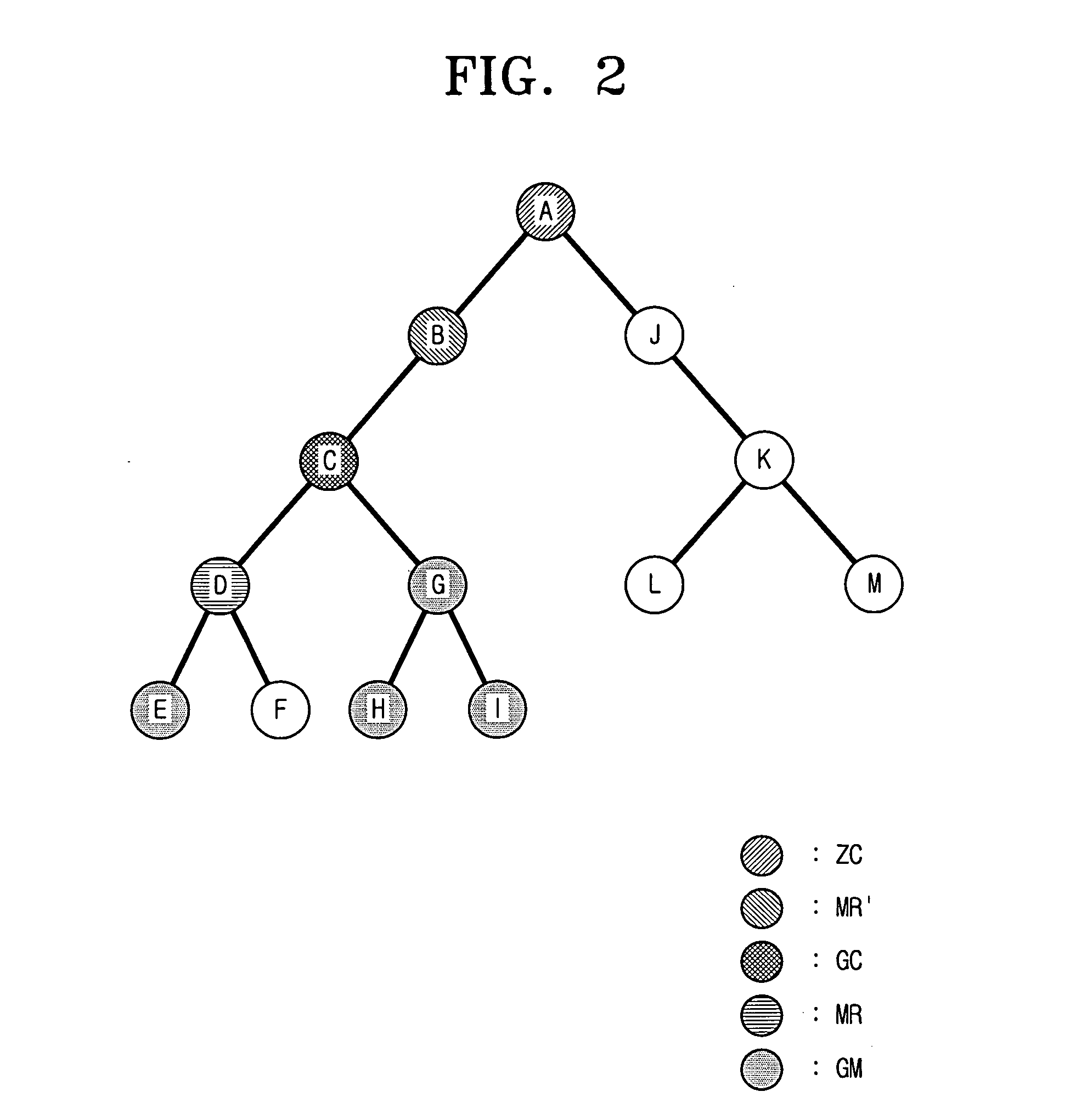Multicast method in zigbee network
- Summary
- Abstract
- Description
- Claims
- Application Information
AI Technical Summary
Benefits of technology
Problems solved by technology
Method used
Image
Examples
first exemplary embodiment -
-First Exemplary Embodiment-
[0039] 1. Joining a Multicast Group
[0040] 1) A node wanting to join a multicast group (hereinafter, referred to as a joining node) analyzes its status. If its status is not a MR, a MR′, or a ZC, the joining node sends a joining request (JREQ) message to its parent node. If its status is the MR, the joining node changes its status from the MR to a GM and ends the joining process.
[0041] If its status is a ZC or the MR′, the joining node changes its status to a GC (when the node B requests to join). The joining node changed to the GC generates a GC update (GCUD) message. The joining node changed to the ZC sends the GCUD message down to the cluster tree, and becomes a new GC of the multicast group. The current GC gives up the GC role upon receiving the GCUD message from the new GC, and stops further transmission of the GCUD message (when the node C receives the GCUD message from the node B).
[0042] 2) A parent node receiving a JREQ message from its child no...
second exemplary embodiment -
-Second Exemplary Embodiment-
[0104] Nodes forming the ZigBee network are classed into a RN− and a RN+ depending on a memory space. The RN− has a relatively limited memory comparing with the RN+. A multicast method according a second exemplary embodiment of the present invention is available with respect to the RN− having the memory limitation. A basic idea of the second exemplary embodiment of the present invention is that a source node sends a generated multicast data packet first to a ZC.
[0105] 1. Joining a Multicast Group
[0106] Members (nodes) of each multicast group record the number of descendant nodes in the multicast group NumDesMem. If the NumDesMem of a multicast group member is 0, the member is a leaf node. The following describes that a non-multicast group node requests to join the multicast group. When a MR requests to join the multicast group, the MR simply changes its status into a GM.
[0107] 1) A node to join the multicast group sends a JREQ message to a ZC.
[0108] ...
third exemplary embodiment -
-Third Exemplary Embodiment-
[0125] According to a third exemplary embodiment of the present invention, a memory required to multicast a packet is reduced further than the second exemplary embodiment of the present invention. The third exemplary embodiment of the present invention does not utilize the concept of the MR′ as in the first or second exemplary embodiment of the present invention.
[0126] 1. Multicast Routing Table (MRT)
[0127] According to the third exemplary embodiment of the present invention, a multicast routing table (MRT) for multicast addresses is suggested. FIG. 7 illustrates the MRT which includes a multicast group address field, a GM field, a GC field, and a number of child nodes being GM or MR field. The multicast group address field is 16 to 32 bits, and the GM field and the GC field respectively are one bit. If a node is a GM, the node checks the GM field, and if the node is a GC, the node checks the GC field. The number of child nodes being GM or MR field is 6...
PUM
 Login to View More
Login to View More Abstract
Description
Claims
Application Information
 Login to View More
Login to View More - R&D
- Intellectual Property
- Life Sciences
- Materials
- Tech Scout
- Unparalleled Data Quality
- Higher Quality Content
- 60% Fewer Hallucinations
Browse by: Latest US Patents, China's latest patents, Technical Efficacy Thesaurus, Application Domain, Technology Topic, Popular Technical Reports.
© 2025 PatSnap. All rights reserved.Legal|Privacy policy|Modern Slavery Act Transparency Statement|Sitemap|About US| Contact US: help@patsnap.com



